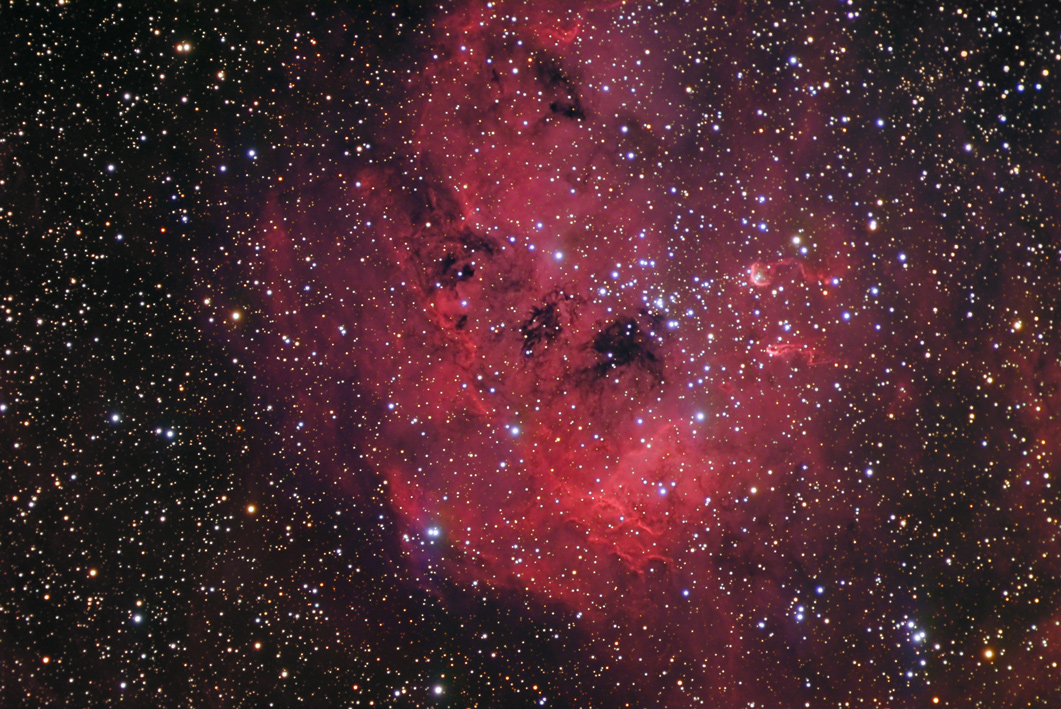

IC410: This is a large region of nebulosity surrounding NGC1893, a young open star cluster, which can be seen near the center of the nebula (partially obscured by foreground interstellar dust, which shows on this picture as the "holes" near the center of the nebula). The star cluster's stars help ionize the nebula's gas, causing the red hue of the nebula. This nebula lies about 12,000 light years distant, which would make the nebula about 125 light years across. I took this picture because I was intrigued by the "tadpoles" toward the right side of the nebula. They apparently are composed of denser and cooler gas and dust than the rest of the nebula, and are about ten light years long, with their "tails" emanating from the star cluster, whose winds and radiation helped form them.
Copyright 2007 Mark de Regt